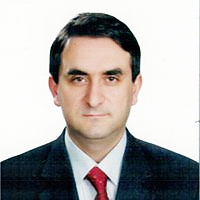Fluctuation of serum creatinine: preoperative and postoperative evaluation of chronic kidney disease patients
Published on: 8th February, 2023
Renal impairment is one of the most severe non-communicable diseases around the world. Especially patients with diagnosed/newly diagnosed renal impairment who needed surgery are more focused on preoperative and postoperative preparation. Serum creatinine is the prime biochemical marker for assessing renal function and the level of impairment is widely measured by this marker as well as Glomerular Filtration Rate (GFR). Objective: Factors responsible for fluctuating serum creatinine during preoperative and postoperative periods and minimizing the process of serum creatinine is the ultimate goal of this study. Method: 37 patients participated in this cross-sectional study who were previously diagnosed/newly diagnosed. They were admitted to different tertiary-level hospitals for emergency or elective surgery. 15 patients were admitted in the renal function impairment stage and 22 were admitted as normal patients’. Values of creatinine at the pre-admission stage and 2nd/3rd post-admission follow-up were compared. Results: 0.41 was the average of 22 patients’ creatinine between pre-admission and 2nd/3rd follow-up. The responsible factor like prolonged staying, immobilization, co-morbidities, different preoperative antibiotics and NSAIDs were also inducers for creatinine elevation. After postoperative hemodialysis rapid decrease of creatinine is seen in normal patients but this decrease is very much minor in CKD-diagnosed patients.
Lifestyle modification practice and associated factors among diagnosed hypertensive patients in selected Hospitals in West Arsi Zone, Oromia Regional State, Ethiopia
Published on: 1st February, 2022
Background: Globally 1.13 billion people were living with hypertension, Out of this two-thirds of them were living in low and middle-income countries. In Ethiopia, Non-Communicable Disease deaths are estimated at around 42%. However, it remains widely undetected and poorly controlled. To resolve these, lifestyle modification approaches that are often overlooked are the cornerstone of the prevention and management of hypertension. Objective: To assess lifestyle modification practice and associated factors among hypertensive patients in selected hospitals in West Arsi Zone, Oromia Regional, Ethiopia December 7 to 21, 2019. Method: Hospital-based cross-sectional study was conducted in the selected public hospital among 299 hypertensive patients. Systemic random sampling methods were used to select the study participants. Data were collected by face-to-face interviews using a structured questionnaire by trained data collectors. Data were analyzed using descriptive statistics and multivariate logistic regression method to identify predictors of the outcome (p < 0.05). Results: Of the total participants, only 25.2% (95% CI: 18.8-32.9) of the patients were practiced recommended lifestyle modifications. Patients Age older than 65 years (AOR = 2.9, 95% CI: 1.17 - 7.0), the patients with 2-5 years’ time since diagnosed hypertension (AOR = 0.26, 95% CI: 0.07 - 0.9), multiple co-morbidity (AOR = 2.7, 95% CI: 1.25 - 5.8,) and their knowledge on hypertension management (AOR = 14.6, 95% CI: 4.6 - 45.9) have an independently associated with recommended lifestyle modification. Conclusion: Lifestyle modification practices among hypertensive patients were low in this study. Age, comorbidity, time since diagnoses of hypertension, and knowledge of lifestyle were identified as predictors of the outcome.
An unusual presentation of atrioventricular nodal reentrant tachycardia
Published on: 12th February, 2021
OCLC Number/Unique Identifier: 8958459896
Introduction: Atrioventricular nodal reentrant tachycardia (AVNRT) is the most frequent supraventricular tachycardia, commonly manifesting as autolimited paroxysmal episodes of rapid regular palpitations that exceed 150 beats per minute (bpm), dizziness and pounding neck sensation.
Case presentation: We present a case of a male patient, 70 years old, with ischemic heart disease and slow-fast AVNRT treated with radiofrequency catheter ablation (RFCA) in March 2019, with regular 6-months follow-ups. He was readmitted in our department in November 2020 for rest dyspnea and incessant fluttering sensation in the neck, without palpitations. The event electrocardiogram (ECG) was initially interpreted by general cardiologist as accelerated junctional rhythm, 75 bpm. Due to the persistence of symptoms and ECG findings, a differential diagnosis between reentry and focal automaticity was imposed. The response to vagal maneuvers and Holter ECG monitoring characteristics provided valuable information. We suspected recurrent slow ventricular rate typical AVNRT, which was confirmed by electrophysiological study and we successfully performed the RFCA of the slow intranodal pathway.
Conclusion: AV nodal reentry tachycardia may have an unusual presentation, occurring in elder male patients with structural heart disease. Antiarrhythmic drugs can promote reentry in this kind of patients. In cases of slow ventricular rate, vagal maneuvers and Holter ECG monitoring can help with the differential diagnosis. The arrhythmia can be successfully treated with RFCA with special caution regarding the risk of AV block.
Near-miss Women Causes and Prevalence in Alobied Maternity Hospital
Published on: 13th November, 2023
Background: Maternal near-miss (MNM) events occur more frequently than maternal deaths; therefore, more detailed and comprehensive studies on maternal morbidity have been conducted and are of value to clinical audits and practices. Purpose: This study aimed to determine the frequency of maternal near misses and the nature of near-missevents. Methodology: This descriptive, retrospective, cross-sectional study over 12 months duration was conducted at the Alobied Teaching Hospital in 2018. Data were collected from patient notes, partographs, and other relevant documents. Demographic and clinical data concerning personal history, obstetric history, and near-miss events. Results: A total of 15202 women were admitted, 339 cases of maternal near misses, maternal near-missrate (MNMR) of 22.3|1000 live births, 200(59%) had an infection, 80(23.6%) hemorrhage, 20(5.9%) severe pre-eclampsia,12(3.5%) eclampsia, 20(5.9%) anemia, convulsions 5 (1.5%) 17(5%) of the cases were admitted to intensive care unit (ICU), 9(2.7%) had liver dysfunction, 9(2.7%) coagulation dysfunction, 8(2.4%) renal dysfunction, 5(1.5%) cerebral problems, 4(1.2%) cardiac dysfunction, and 2(0.6%) had developed respiratory dysfunction.Conclusion: The maternal near-miss rate was 22.3|1000 live births. Most near-miss cases occurred before the women arrived at the hospital. The major causes of maternal near misses were infection, hemorrhage anemia, pre-eclampsia, and eclampsia.
A case report of Multi System Atrophy (MSA) with cross over features of Progressive Supranuclear Palsy (PSP)
Published on: 13th September, 2021
OCLC Number/Unique Identifier: 9252228462
We describe an interesting case of Multi System Atrophy who had cross over features of progressive supranuclear palsy along with classical clinical findings which led to the diagnosis.
Associations of arterial stiffness with left ventricular mass index and carotid intima-media thickness in the hypertensives
Published on: 5th May, 2022
Background: Arterial stiffness has been considered an independent predictor of cardiovascular disease in addition to the traditionally known cardiovascular risk factors. Objectives: This study aimed to investigate the associations between arterial stiffness with left ventricular mass index and carotid intima-media thickness in the hypertensives. Methods: A descriptive cross-sectional study compared a control group in 210 study subjects (105 hypertensives and 105 normotensives). Measuring left ventricular mass index by echocardiography and carotid intima-media thickness by carotid doppler ultrasonography. Pulse wave velocity was measured using the Agedio B900 device and the Agedio K520 application. The manual method was measured by the ankle-brachial index.Results: There was a statistically significant positive correlation between pulse wave velocity and age (r = 0.922, p < 0.001). The ankle-brachial index had a statistically significant positive correlation at a weak level with left ventricular mass index and carotid intima-media thickness, in which the coefficient r was equal to 0.219 (p < 0.05) and 0.250 (p < 0,001), respectively. Pulse wave velocity also had a statistically significant positive correlation at a weak level with left ventricular mass index and carotid intima-media thickness, in which the coefficient r was equal to 0.188 (p < 0.05) and 0.289 (p < 0,001), respectively. Pulse wave velocity had a multivariable linear correlation with gender, pulse, mean blood pressure, and ankle-brachial index with statistical significance; and they were written in the form of the following equation: Pulse wave velocity (R2: 41.3%) = 0.641*(Gender) – 0.027*(Pulse) + 0.043*(Mean blood pressure) + 8.378*(Ankle-brachial index) – 3.254.Conclusion: Arterial stiffness was statistically correlated with left ventricular mass index and carotid intima-media thickness in the hypertensives. Through the above research results, we suggest that the hypertensives should be combined with the evaluation of hemodynamic parameters and arterial stiffness for contributing to the diagnosis and detection of cardiovascular complications, thereby improving the quality of monitoring and treatment in hypertensive patients.
Age, smoking, hypertension, and aortic aneurysm: Interactions and risks
Published on: 6th January, 2022
OCLC Number/Unique Identifier: 9391753907
Background/Aim: Aortic aneurysm is the bulging of a weakened portion of the aorta. The aorta is the major blood vessel that feeds blood (carrying oxygen, nutrients and water) to the tissues of the body. When a portion of the wall of the aorta becomes weak, blood pushing against the vessel wall can cause it to bulge like a balloon (aneurysm) leading to aortic dissection (a tear in the wall of the aorta that can cause life-threatening bleeding or sudden death). Blood pressure is the force arterial blood exerts on the wall of the artery. When this pressure is consistently high above 140/100 mmHg it is referred to as hypertension. As an individual gets older over time, physiological functions of the body depreciate leading to some abnormalities. Smoking is the consumption of tobacco mostly by inhalation of the smoke that is produced from burning the tobacco. This review article examines the close interactions between age, smoking, hypertension and aortic aneurysm, with a view to understanding mechanisms by which these factors predispose a patient to an aortic aneurism. It is also to observe if these factors interfere with treatment and recovery from aneurysms. Conclusion: After careful review, it is observed that age and smoking are risk factors for hypertension, and together with hypertension, the three factors predispose an individual to high risk for aortic aneurysm.
Snow white: an allergic girl?
Published on: 4th March, 2022
OCLC Number/Unique Identifier: 9437635225
As I considered the exciting life of Little Snow-White, I started to think that the Grimm Brothers placed in that novel many hints that grouped the current knowledge of some features related to symptoms shown by allergic people.
Cytokine intoxication as a model of cell apoptosis and predict of schizophrenia - like affective disorders
Published on: 20th December, 2021
OCLC Number/Unique Identifier: 9396214740
For a long time there was no explanation of a study which had revealed that people with schizoaffective disorders and in particular suicidal attempts rarely get cancer. But now, we can assume that there are diseases that are “mirrored” because they occur with reverse/feedback pathophysiological mechanisms so that they are, in fact, antagonists.
The complex interplay in the regulation of cardiac pathophysiologic functionalities by protein kinases and phosphatases
Published on: 26th August, 2021
OCLC Number/Unique Identifier: 9225959643
Protein phosphorylation regulates several dimensions of cell fate and is substantially dysregulated in pathophysiological instances as evident spatiotemporally via intracellular localizations or compartmentalizations with discrete control by specific kinases and phosphatases. Cardiovascular disease manifests as an intricately complex entity presenting as a derangement of the cardiovascular system. Cardiac or heart failure connotes the pathophysiological state in which deficient cardiac output compromises the body burden and requirements. Protein kinases regulate several pathophysiological processes and are emerging targets for drug lead or discovery. The protein kinases are family members of the serine/threonine phosphatases. Protein kinases covalently modify proteins by attaching phosphate groups from ATP to residues of serine, threonine and/or tyrosine. Protein kinases and phosphatases are pivotal in the regulatory mechanisms in the reversible phosphorylation of diverse effectors whereby discrete signaling molecules regulate cardiac excitation and contraction. Protein phosphorylation is critical for the sustenance of cardiac functionalities. The two major contributory ingredients to progressive myocardium derangement are dysregulation of Ca2+ processes and contemporaneous elevated concentrations of reactive oxygen species, ROS. Certain cardiac abnormalities include cardiac myopathy or hypertrophy due to response in untoward haemodynamic demand with concomitant progressive heart failure. The homeostasis or equilibrium between protein kinases and phosphatases influence cardiac morphology and excitability during pathological and physiological processes of the cardiovascular system. Inasmuch as protein kinases regulate numerous dimensions of normal cellular functions, the pathophysiological dysfunctionality of protein kinase signaling pathways undergirds the molecular aspects of several cardiovascular diseases or disorders as related in this study. These have presented protein kinases as essential and potential targets for drug discovery and heart disease therapy.
















